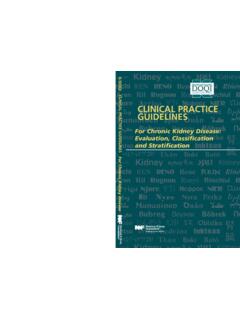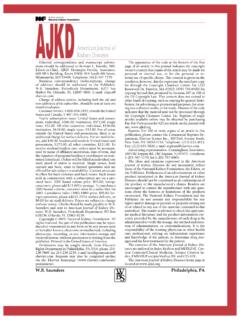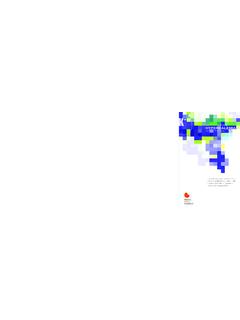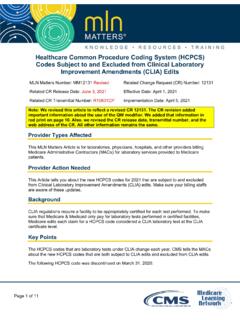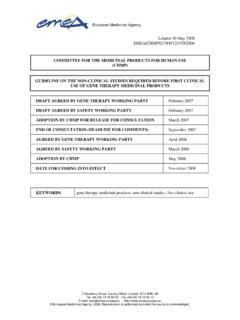Transcription of A Clinical Update on Dialyzer Membranes State-of-the-Art ...
1 A Clinical Update on Dialyzer Membranes State-of-the-Art Considerations for Optimal Care in HemodialysisSupported by Key features of high performance membrane dialyzers Influence of design and chemical composition on membrane performance Influence of membrane characteristics on Clinical status Consideration of membrane features as part of the hemodialysis prescription2 State-of-the-Art Considerations for Optimal Care in Hemodialysis3 INTRODUCTIONM embrane performance, as determined by the effectiveness of solute clearance and biocompatibility, is of greatest concern when choosing a Technological advances in membrane design, chemical compo-sition, and sterilization methods have led to enhanced performance and versatility to the extent that Dialyzer choice may reduce morbidity and pro-long survival.
2 Accordingly, the Kidney Disease Outcomes Quality Initiative (KDOQI) Clinical Practice Recommendation for Dialyzer Membranes and Reuse states that though the selection of Dialyzer Membranes and reuse practices are not included in the prescription of small-solute clearance, they can be important determinants of patient survival and quality of bulletin addresses key features of Dialyzer Membranes , particularly high performance Membranes , and how they can optimize hemo-dialysis treatments. Many of the Membranes discussed, however, can also be employed for other renal replacement therapies such as hemodiafiltration, or for other applications such as removal of free light chains. In addition to Membranes , other Dialyzer features are briefly reviewed as part of the overall consideration in Dialyzer selection.
3 THIS BULLETIN4 HIGH PERFORMANCE Membranes TABLE 1. EXAMPLES OF HIGH PERFORMANCE DIALYZERS Adapted from Saito A, Kawanishi H, Yamashita AC, Mineshima M, eds. In: High-Performance Membrane Dialyzers. Contributions to Nephrology. Vol 173. Basel: Karger; ABBREVIATION MANUFACTURER MEMBRANE TYPEC ellulose triacetate CTA Nipro hollow fiberPolysulfone PSf Asahi Kasei Kuraray hollow fiber Medical Fresenius hollow fiber Toray hollow fiberPolyethersulfone PES Nipro hollow fiber Membrana hollow fiberPolymethylmethacrylate PMMA Toray hollow fiberPolyester polymer alloy PEPA Nikkiso hollow fiberEthylene vinyl alcohol EVAL Asahi Kasei Kuraray hollow fibercopolymer MedicalPolyacrylonitrile PAN Gambro hollow fiber
4 LaminatedHigh performance membrane (HPM) is a classifica-tion used in Japan to identify hollow fiber dialyzers with an advanced level of performance. The criteria for HPM include excellent biocompatibility, effec-tive clearance of target solutes, and, pore size larger than conventional hemodialysis (HD) Membranes , thus promoting the removal of protein-bound uremic toxins, and middle to large molecular -weight solutes, including 2-microglobulin ( 2-M). HPM should also have a high molecular weight cut-off, a sharp cut-off curve, and a greater capacity for adsorption than conventional HD Membranes . The Japanese Society of Dialysis Therapy (JSDT) also recommends that the pore size in HPM be large enough to allow slight losses of albumin, at a rate of < 3 g/session with a blood flow rate of 200 ml/min and a dialysate flow rate of 500 A larger pore size approximates the glomerular filtration of uremic toxins and albu-min in the human kidney, while some protein leakage may enhance albumin turnover.
5 3,4,5 Table 1 includes examples of high performance membrane Considerations for Optimal Care in Hemodialysis5 INFLUENCE OF DESIGN AND CHEMICAL COMPOSITION ON MEMBRANE PERFORMANCE FIGURE 3. CROSS SECTIONS OF DIFFERENT HOLLOW FIBERS a) symmetric cellulose membrane fiber8 (uniform pore size throughout membrane wall) b) asymmetric polyethersulfone membrane fiber9 (pores are larger on dialysate side of membrane wall)Membrane fibers are either symmetric or asymmetric, as noted in cross sectional views. (Figure 3) Symmetric Membranes , which can be derived either from cellulose or entirely from synthetic polymers, have a homogeneous configuration throughout the membrane wall, with both the inner and outer layers usually containing similar pore sizes.
6 Asymmetric Membranes , however, are derived from synthetic polymers only, and have a thin inner selective layer and an outer thick support layer; almost all Membranes made of polysulfone (PSf) or polyethersul-fone (PES) have this type of structure. Diffusive resistance to small molecules due to the fiber wall being thick can be compensated for by increasing porosity within the support layer. Membranes made of polyethersulfone/PVP/polyamide (PEPA) contain three layers, with the outer layer providing mechanical 8,9 Whereas cellulose derived fibers are naturally wave-like (Moire effect), synthetic fibers may be crimped to produce a rippled pattern that more evenly distrib-utes the flow of ,11 (Figure 4) Such a design prevents contact or excess packing among fibers and thus allows for better matching of blood and dialysate flows across all sections of the fiber ,12,13 After the membrane fibers are secured within the potting material, they are opened by cutting them in a manner that produces a smooth and flat surface, which is crucial for preventing hemolysis, blood clotting, or retention of residual (Figure 5)
7 6 a) undulated fibers that promote even dialysate flow b) straight fibersb) rough cut blood-contacting surface not a) smooth cut blood-contacting surface FIGURE 4: RIPPLED VERSUS STRAIGHT HOLLOW FIBERS FIGURE 5. SMOOTH VERSUS ROUGH CUT BLOOD-CONTACTING SURFACES 99 State-of-the-Art Considerations for Optimal Care in Hemodialysis7 PORE SIZEPORE POPULATIONPORE SIZEPORE POPULATIONNARROW DISTRIBUTIONBROAD DISTRIBUTIONTo function more like the human kidney, we built thousands of fibers into each ELISIO Dialyzer thus Polynephron where every fiber acts as a nephron (human kidney element). This unique hollow-fiber formulation, developed by Nipro, features a one-of-a-kind, highly asymmetric structure to deliver outstanding biocompatibility, hemocompatibility, thrombogenicity, and solute-removal performance.
8 Newly formulated PES (polyethersulfone) composition for more well-balanced membrane properties 3D chemical structure modeling with ideal mix of hydrophilic and hydrophobic domains reduces membrane fouling Advanced pore-spinning technology creates more homogenous pore sizes to optimize sieving properties Improved removal of uremic toxins and low- molecular - weight proteins, with limited loss of important proteins such as albumin Maximized clearance performance through ripple structure processing, enabling more homogenous flow distribution of dialysate in each fiber bundle Improved mechanical fiber strength reduces risk of fiber leakageNon-uniform pore size and spacing on membrane surface provides reduced , highly uniform ELISIO Polynephron pore size and distribution offers far better of fibers are built into every Dialyzer .
9 The 3d chemical structure modeling affords an ideal mixture of hydrophilic and hydrophobic Polynephron : State-of-the-Art MembranePORE SIZEPORE POPULATIONPORE SIZEPORE POPULATIONNARROW DISTRIBUTIONBROAD DISTRIBUTIONTo function more like the human kidney, we built thousands of fibers into each ELISIO Dialyzer thus Polynephron where every fiber acts as a nephron (human kidney element). This unique hollow-fiber formulation, developed by Nipro, features a one-of-a-kind, highly asymmetric structure to deliver outstanding biocompatibility, hemocompatibility, thrombogenicity, and solute-removal performance. Newly formulated PES (polyethersulfone) composition for more well-balanced membrane properties 3D chemical structure modeling with ideal mix of hydrophilic and hydrophobic domains reduces membrane fouling Advanced pore-spinning technology creates more homogenous pore sizes to optimize sieving properties Improved removal of uremic toxins and low- molecular - weight proteins, with limited loss of important proteins such as albumin Maximized clearance performance through ripple structure processing, enabling more homogenous flow distribution of dialysate in each fiber bundle Improved mechanical fiber strength reduces risk of fiber leakageNon-uniform pore size and spacing on membrane surface provides reduced.
10 Highly uniform ELISIO Polynephron pore size and distribution offers far better of fibers are built into every Dialyzer . The 3d chemical structure modeling affords an ideal mixture of hydrophilic and hydrophobic Polynephron : State-of-the-Art MembraneEach membrane has a molecular weight cut-off for the largest molecule that can pass through it. Knowing this parameter allows nephrologists some specificity in the ability to more effectively remove solutes of particular concern in an individual patient. Dialyzers have mo-lecular weight cut-offs ranging from 3,000 Da to more than 15,000 ,15 The new generation of super high-flux Membranes have cut-offs closer to 65,000 Nanotechnology has improved the uniformity of pore size, in contrast to earlier Membranes that had a wide range of pore sizes, with fewer large pores produced, and thus limited removal of middle molecular weight uremic Membranes with a homogeneous pore size and a narrow pore size distribution have a sharper cut-off in the sieving coefficient,17 thus leading to im-proved passage of low molecular weight proteins while reducing the loss of ,18,19 (Figure 6) FIGURE 6.
